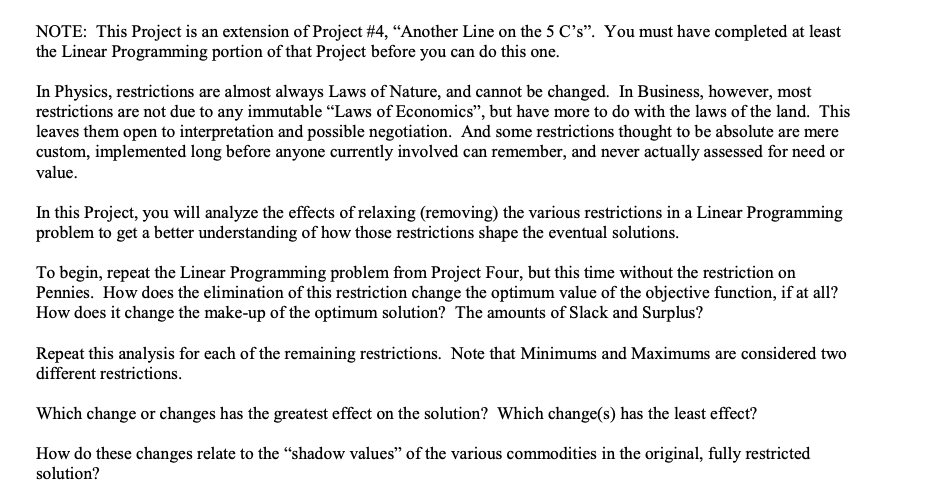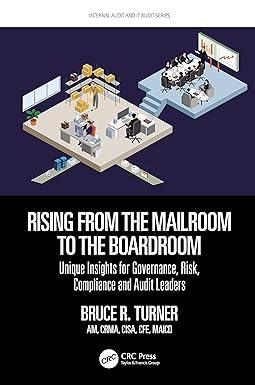Answered step by step
Verified Expert Solution
Question
1 Approved Answer
Median Income for Mesa, Arizona: $48.259 per year Beef ( Cattle ): $4.86 per pound Oranges ( Citrus ): $1.42 per pound Pair of Jeans

Median Income for Mesa, Arizona: $48.259 per year
Beef ( Cattle ): $4.86 per pound
Oranges ( Citrus ): $1.42 per pound
Pair of Jeans ( Clothes ): $40.86
Penny ( Copper ): $0.15
One Movie Ticket ( Climate ): $6.00
Note: Discussion, Work, Conclusions, Graph, and Table
NOTE: This Project is an extension of Project #4, "Another Line on the 5 C's". You must have completed at least the Linear Programming portion of that Project before you can do this one. In Physics, restrictions are almost always Laws of Nature, and cannot be changed. In Business, however, most restrictions are not due to any immutable "Laws of Economics", but have more to do with the laws of the land. This leaves them open to interpretation and possible negotiation. And some restrictions thought to be absolute are mere custom, implemented long before anyone currently involved can remember, and never actually assessed for need or value. In this Project, you will analyze the effects of relaxing (removing) the various restrictions in a Linear Programming problem to get a better understanding of how those restrictions shape the eventual solutions. To begin, repeat the Linear Programming problem from Project Four, but this time without the restriction on Pennies. How does the elimination of this restriction change the optimum value of the objective function, if at all? How does it change the make-up of the optimum solution? The amounts of Slack and Surplus? Repeat this analysis for each of the remaining restrictions. Note that Minimums and Maximums are considered two different restrictions. Which change or changes has the greatest effect on the solution? Which change(s) has the least effect? How do these changes relate to the "shadow values" of the various commodities in the original, fully restricted solution? NOTE: This Project is an extension of Project #4, "Another Line on the 5 C's". You must have completed at least the Linear Programming portion of that Project before you can do this one. In Physics, restrictions are almost always Laws of Nature, and cannot be changed. In Business, however, most restrictions are not due to any immutable "Laws of Economics", but have more to do with the laws of the land. This leaves them open to interpretation and possible negotiation. And some restrictions thought to be absolute are mere custom, implemented long before anyone currently involved can remember, and never actually assessed for need or value. In this Project, you will analyze the effects of relaxing (removing) the various restrictions in a Linear Programming problem to get a better understanding of how those restrictions shape the eventual solutions. To begin, repeat the Linear Programming problem from Project Four, but this time without the restriction on Pennies. How does the elimination of this restriction change the optimum value of the objective function, if at all? How does it change the make-up of the optimum solution? The amounts of Slack and Surplus? Repeat this analysis for each of the remaining restrictions. Note that Minimums and Maximums are considered two different restrictions. Which change or changes has the greatest effect on the solution? Which change(s) has the least effect? How do these changes relate to the "shadow values" of the various commodities in the original, fully restricted solutionStep by Step Solution
There are 3 Steps involved in it
Step: 1

Get Instant Access to Expert-Tailored Solutions
See step-by-step solutions with expert insights and AI powered tools for academic success
Step: 2

Step: 3

Ace Your Homework with AI
Get the answers you need in no time with our AI-driven, step-by-step assistance
Get Started


